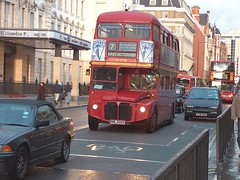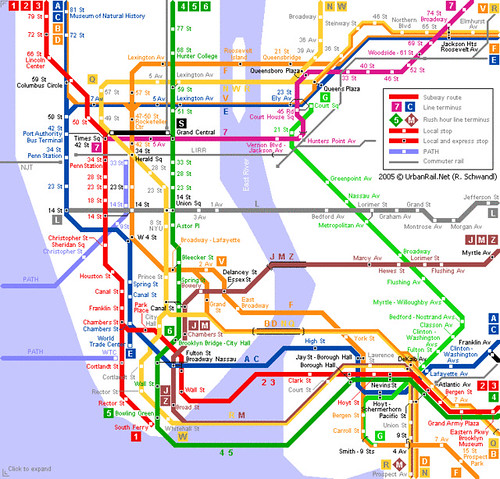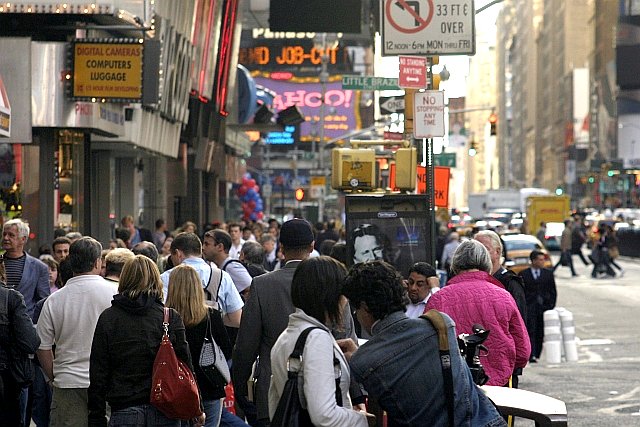Should we have to pay to drive downtown? It depends.

Posted February 22, 2008 at 5:15PM

In the policy circles I inhabit, “congestion pricing” is all the rage. This is mostly because New York City’s mayor Michael Bloomberg has proposed that anyone entering midtown or lower Manhattan in a motor vehicle during peak hours should pay eight dollars each time for the privilege.
The idea is that, if people have to pay, some will shift to other forms of transportation, decreasing both congestion and pollution in the inner city. In addition, the fees can be applied to fund public transportation infrastructure, parks, and other things that provide alternatives and make a city more livable. It has done just that in two major cities, London and Stockholm, where the concept has been instituted in recent years, say its advocates, I think correctly.
NRDC is supporting the proposal for New York, with my friend Rich leading our efforts. And so is my favorite smart growth group in New York, the Regional Plan Association. Our longtime ally Tri-State Transportation Campaign is on the wagon, too.
I’m on board. But I would caution people from jumping to apply the concept to other cities in the US. New York, London and Stockholm have some major prerequisites for the success of downtown pricing that most American cities don’t: amazingly strong downtowns, and amazingly strong public transportation systems. New York, in particular, has arguably the most famous downtown in the world. London’s Underground and bus system is world-renowned. The highly respected transportation researchers Robert Cervero and Michael Bernick, in their excellent book Transit Villages for the 21st Century, referred to Stockholm as “arguably the best example anywhere of coordinated planning of rail transit and urban development.” All three cities have tightly packed downtowns that, prior to the institution of pricing, experienced severe congestion.


The Washington DC region, where I live, has also been experiencing severe traffic congestion, but it’s mostly in the suburbs, not downtown. Traffic downtown actually flows relatively freely during rush hour compared to traffic around, say, the suburbs of Tyson’s Corner and Springfield in Virginia, or the I-270 corridor in Montgomery and Frederick Counties in Maryland. That’s partly because those suburban places have lousy street design, forcing all drivers onto the same few roads, partly because the transit alternatives are poor in many suburban locations, and partly because those suburbs have been growing rapidly at the expense of DC’s downtown, which until this decade was losing both population and jobs. Indeed, from 1950 to 2000 the central city’s population declined from 802,200 to 572,100, a crippling loss of near 30 percent. During the same period, the suburban population quadrupled. In 1950, the central city held 82 percent of the region’s jobs; since then it has been losing jobs while the suburbs have gained, and now it holds only 24 percent. (See a highly informative presentation of regional trends here.)
The last thing DC needs right now is a tax on people who want to work in the city, regardless of how they get here. If still more jobs migrate to the suburbs, regional sprawl, driving, pollution and congestion will all increase, not go down. In fact, if we are sincere about putting a price on congestion and pollution, we should tax the suburban roads, not the downtown streets.
 Looking at some other US cities, Cleveland lost half its population between 1950 and 1990, while its suburbs doubled in size. In recent years, 282 square miles of central Kansas City lost population while, because of suburban growth, the region as a whole gained 29 percent in residents. The amount of developed land in the region doubled during that time period. Even in the booming Sun Belt, all the economic and population growth has been occurring in the suburbs. In Los Angeles, job dispersal has been so pronounced that the 19 largest geographic job centers, combined together and including LA’s downtown, hold only 18 percent of the region’s jobs! (Support for these stats may be found in this book.) Heck, I know several professionals in the “Research Triangle” area of Raleigh-Durham-Chapel Hill, and every one works in a suburban location. Transit usage is negligible, and suburban traffic is a nightmare.
Looking at some other US cities, Cleveland lost half its population between 1950 and 1990, while its suburbs doubled in size. In recent years, 282 square miles of central Kansas City lost population while, because of suburban growth, the region as a whole gained 29 percent in residents. The amount of developed land in the region doubled during that time period. Even in the booming Sun Belt, all the economic and population growth has been occurring in the suburbs. In Los Angeles, job dispersal has been so pronounced that the 19 largest geographic job centers, combined together and including LA’s downtown, hold only 18 percent of the region’s jobs! (Support for these stats may be found in this book.) Heck, I know several professionals in the “Research Triangle” area of Raleigh-Durham-Chapel Hill, and every one works in a suburban location. Transit usage is negligible, and suburban traffic is a nightmare.
None of these more typical American cities has a public transportation system anything like New York's (see above), London's, or Stockholm's. And none, in my opinion, would be a good candidate for downtown pricing.
Due to some smart growth efforts and a renewed preference for urban living, many US downtowns are just now starting to make comebacks. We don’t want to create incentives for people to stay away from downtowns and/or choose to locate their businesses elsewhere, just as we are beginning to make progress. In fact, if some of these places experienced more downtown congestion, that might actually be a sign of environmental progress, a sign that sprawl is slowing. I’m not saying that there aren’t any other US cities where taxing downtown driving wouldn’t work, but you need the right ingredients: downtowns that are the unquestioned hubs of regional economic activity, and very strong transit systems that are convenient for all, or nearly all. In the US, New York is an exception, not the rule.
 Finally, there is another reason why New York may be much better positioned to accept and benefit from downtown pricing, and that’s the political calculus. Unlike every other US city, fewer than 5 percent of NYC residents drive downtown to work. Most New Yorkers, including half of those in the “outer boroughs” of the city beyond Manhattan, don’t even own cars at all. The tax (or, if you prefer, fee) will be felt by very few individuals and a lot of delivery and trucking operations. For most New Yorkers, it’s a tax on someone else; that’s not the case elsewhere.
Finally, there is another reason why New York may be much better positioned to accept and benefit from downtown pricing, and that’s the political calculus. Unlike every other US city, fewer than 5 percent of NYC residents drive downtown to work. Most New Yorkers, including half of those in the “outer boroughs” of the city beyond Manhattan, don’t even own cars at all. The tax (or, if you prefer, fee) will be felt by very few individuals and a lot of delivery and trucking operations. For most New Yorkers, it’s a tax on someone else; that’s not the case elsewhere.
I hope Rich and NRDC’s friends in New York can make this happen. It would be terrific to have less motor vehicle congestion and pollution in the Big Apple. (Does anyone still call it that?) But, if you can make it here, you still can't make it anywhere, not on this issue.
And, speaking of congestion, should they price the sidewalks as well? :)